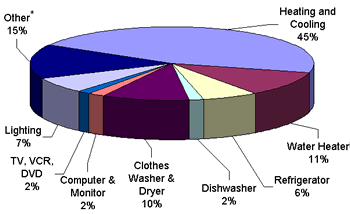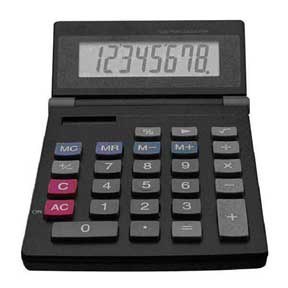


| ENERGY FACTS |
|
|---|
Heating and cooling your home uses more energy and drains more energy dollars than any other system in your home. Typically, 56% of your utility bill goes for heating and cooling. What’s more, heating and cooling systems in the United States together emit over a half billion tons of carbon dioxide into the atmosphere each year, adding to global warming. They also generate about 24% of the nation’s sulfur dioxide and 12% of the nitrogen oxides, the chief ingredients in acid rain.
No matter what kind of heating, ventilation, and air-conditioning system you have in your house, you can save money and increase your comfort by properly maintaining and upgrading your equipment. But remember, an energy-efficient furnace alone will not have as great an impact on your energy bills as using the whole-house approach. By combining proper equipment maintenance and upgrades with appropriate insulation, air sealing, and thermostat settings, you can cut your energy bills and your pollution output in half.
Here’s where your energy dollars are spent.

|
•
|
Set your thermostat as low as is comfortable in the
winter and as high as is comfortable in the summer.
|
|---|---|
|
• |
Clean or replace filters on furnaces once a
month or as needed.
|
| • | Clean warm-air registers, baseboard heaters,
and radiators as needed.
|
| • | Do not block registers or heaters by
furniture, carpeting, or drapes.
|
| • | Bleed trapped air from hot-water radiators
once or twice a season.
|
| • | Place heat-resistant radiator reflectors
between exterior walls and the radiators.
|
| • | Turn off kitchen, bath, and other exhaust
fans within 20 minutes after you are done cooking or bathing.
|
| • | When replacing exhaust fans, consider
installing high-efficiency, low-noise models.
|
| • | During the heating season, keep the draperies
and shades on your south facing windows open during the day to
allow the sunlight to enter your home and closed at night to
reduce the chill you may feel from cold windows.
|
| • | During the cooling season, keep the window
coverings closed during the day to prevent solar gain.
|
| • | Select energy-efficient products when you buy
new heating and cooling equipment. The national minimum is 78%
AFUE, but there are ENERGY
STAR models on the market that exceed 90% AFUE.
|
| • | For air conditioners, look for a high
Seasonal Energy Efficiency Ratio (SEER). The current minimum is
13 SEER for central air conditioners. The American Council for an
Energy-Efficient Economy provides tips for buying
energy-efficient furnaces, boilers, AC units, and heat pumps on
its Web site.
|
| • | Check your ducts
for air leaks. First, look for sections that should be joined but
have separated and then look for obvious holes.
|
 |
Find out how you can save on energy cost in your home with this handy calculator developed at Lawrence Berkeley National Laboratory.
The Home Energy Saver’s Energy Advisor calculates energy use and savings opportunities, based on a detailed description of the home provided by the user. You can begin the process by simply entering your zip code, and in turn receive instant initial estimates. By providing more information about your home, you will receive increasingly customized results along with energy-saving upgrade recommendations.
source: U.S. Department of Energy and Home Energy Saver
